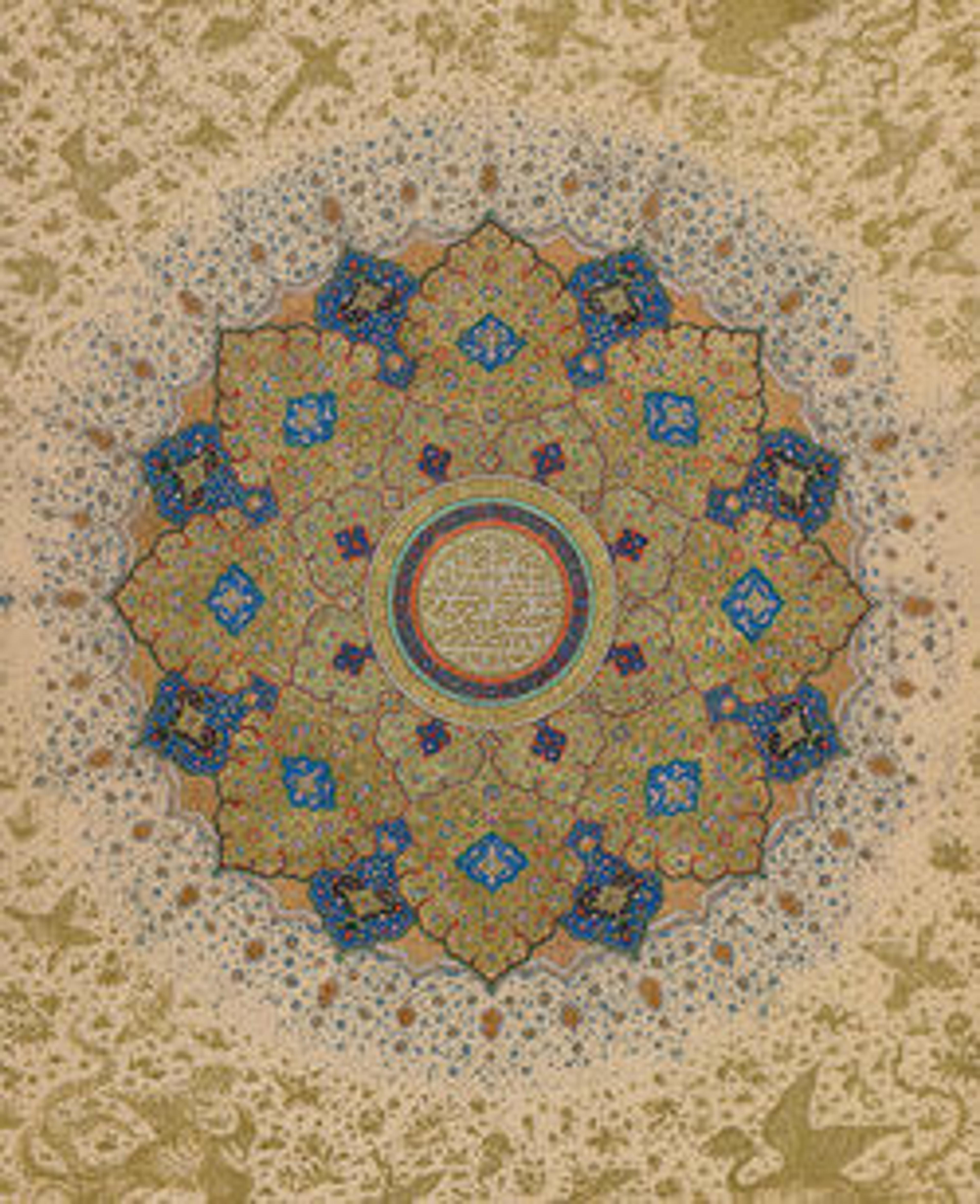Folios from a Qur'an Manuscript
The first centuries in the copying of the Qur’an witnessed a succession of changing styles in the manuscript’s calligraphy, decoration, and format. This Qur’an shows many of the changes taking place in the medieval period. Whereas earlier Qur’ans were made of parchment and inscribed in a relatively simple kufic script, this manuscript was created of paper and of an angular script known as "new style script". The folios belong to the last volume of a four-part Qur’an manuscript, other folios of which provide the date of AH Ramadan 383 / AD October–November 993 and indicate that it was copied in the Iranian city of Isfahan. In both its medium and calligraphy, these folios reveal the increasing cultural pull of the eastern edge of the Islamic world, a decided shift from the earlier, Mediterranean- focus of the first Islamic centuries.
Artwork Details
- Title: Folios from a Qur'an Manuscript
- Date: 383 AH/993 CE
- Geography: Made in Iran, Isfahan
- Medium: Ink and gold on paper
- Dimensions: H. 9 7/16 in. (24 cm)
W. 13 13/16 in. (35.1 cm)
Mat: 14 1/4 x 19 1/4 in. (36.2 x 48.9 cm)
Frame: 15 1/4 x 20 1/4 in. (38.7 x 51.4 cm) - Classification: Codices
- Credit Line: Rogers Fund, 1940
- Object Number: 40.164.5a, b
- Curatorial Department: Islamic Art
More Artwork
Research Resources
The Met provides unparalleled resources for research and welcomes an international community of students and scholars. The Met's Open Access API is where creators and researchers can connect to the The Met collection. Open Access data and public domain images are available for unrestricted commercial and noncommercial use without permission or fee.
To request images under copyright and other restrictions, please use this Image Request form.
Feedback
We continue to research and examine historical and cultural context for objects in The Met collection. If you have comments or questions about this object record, please contact us using the form below. The Museum looks forward to receiving your comments.
